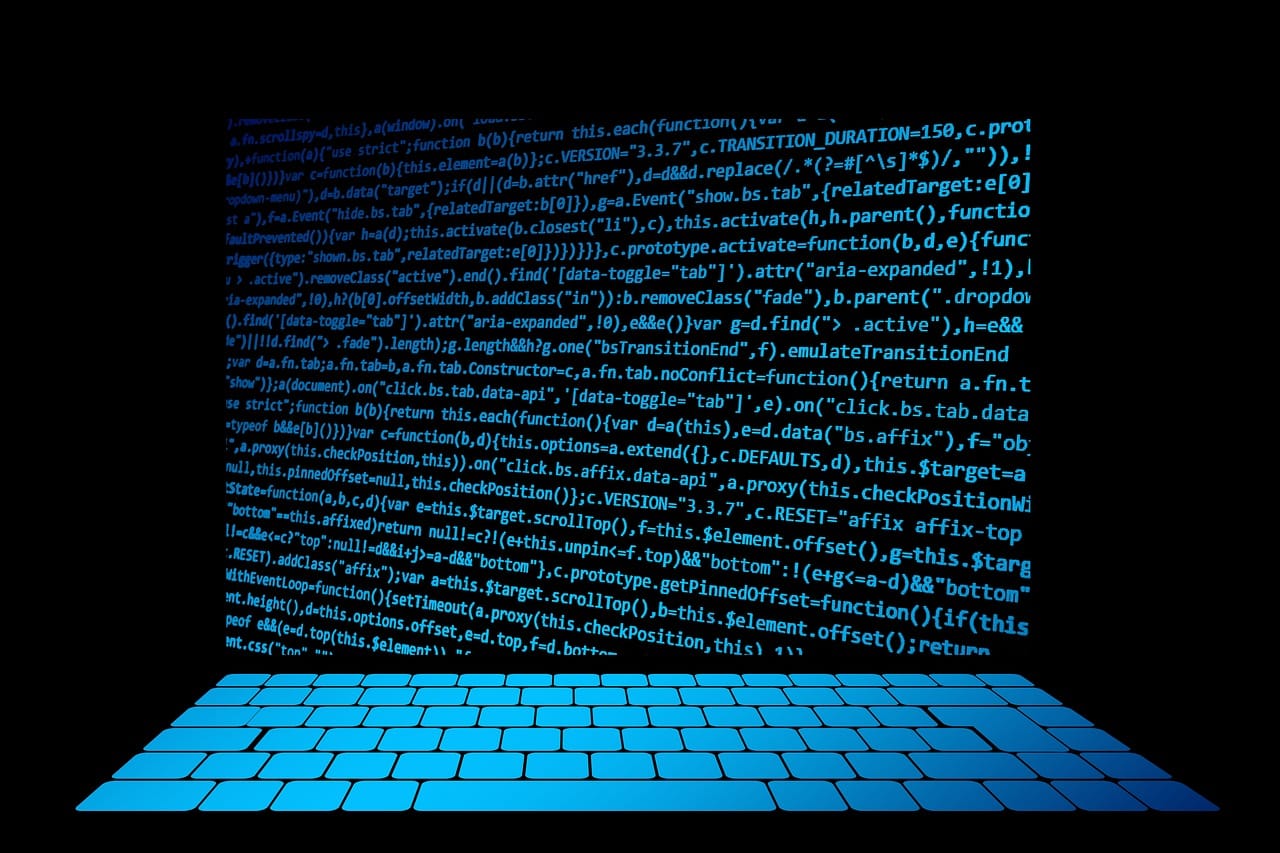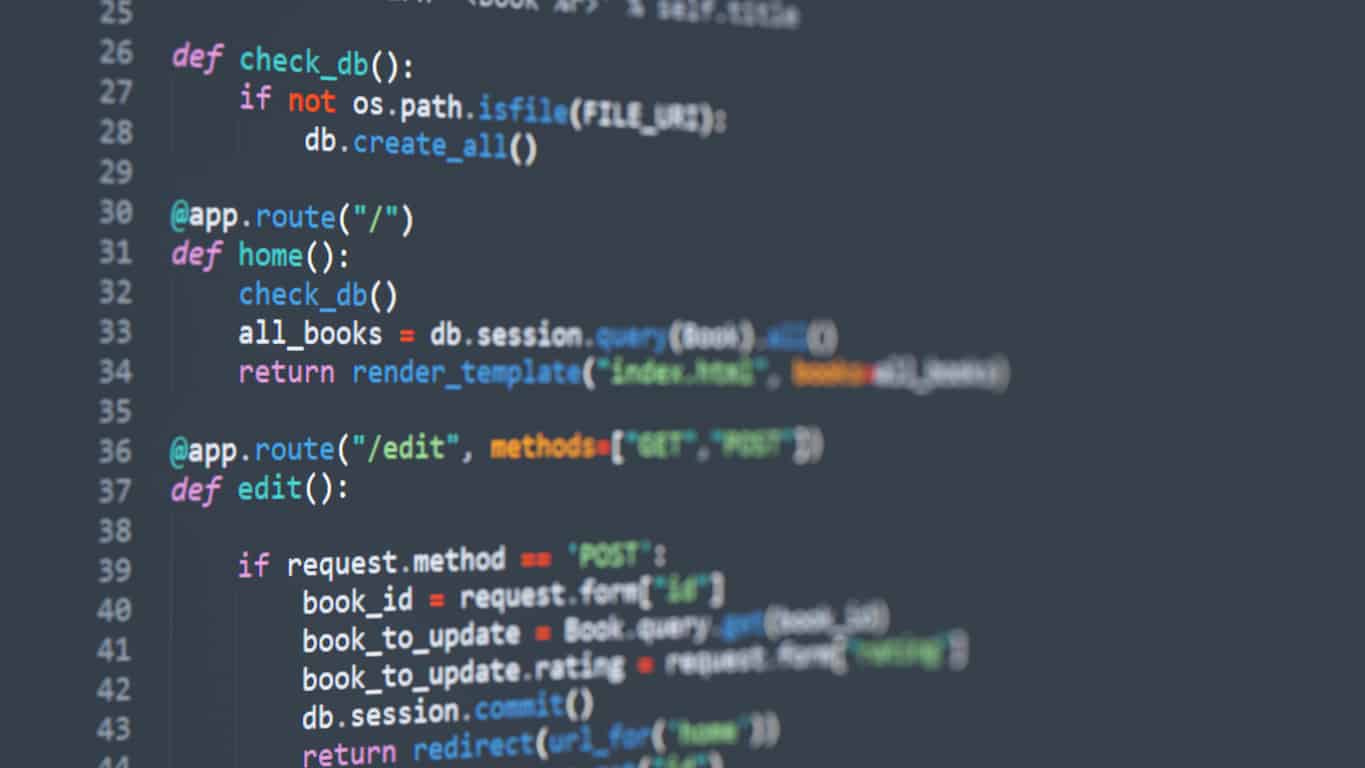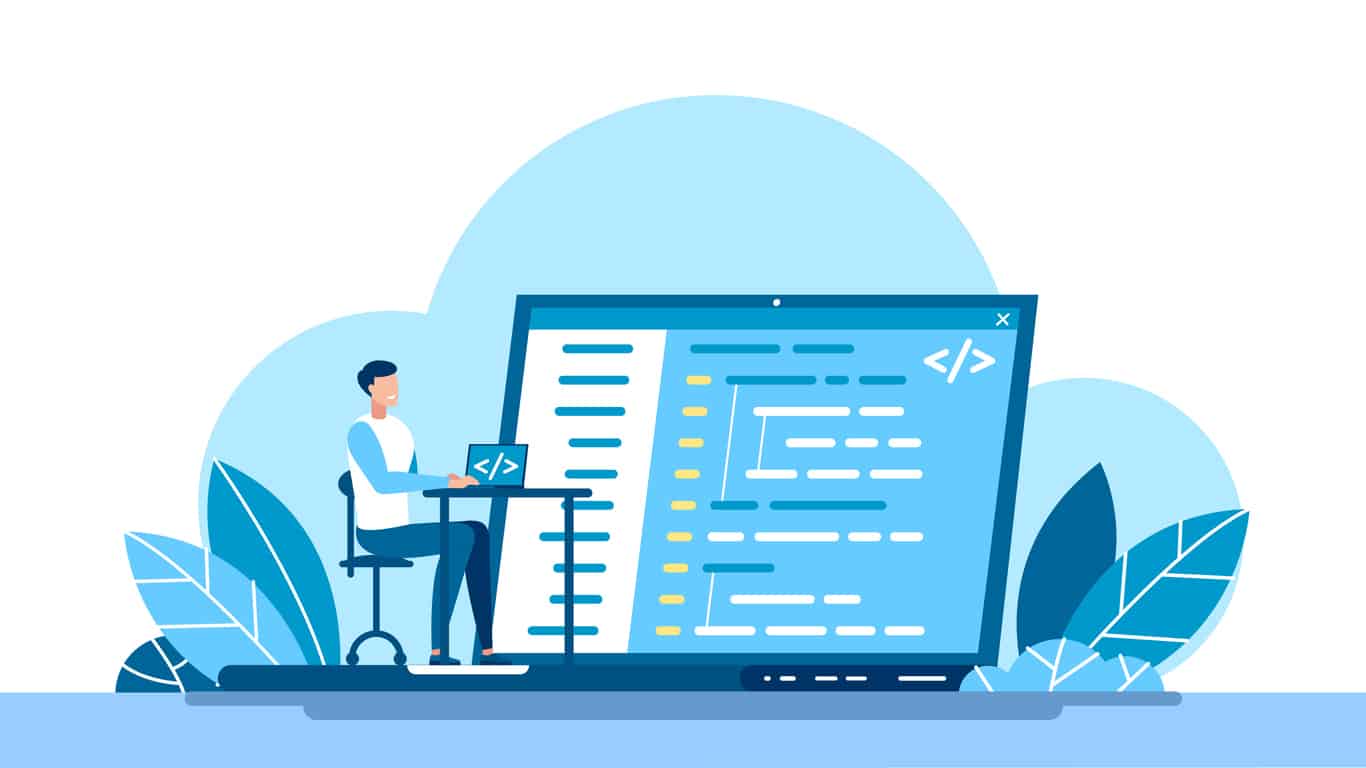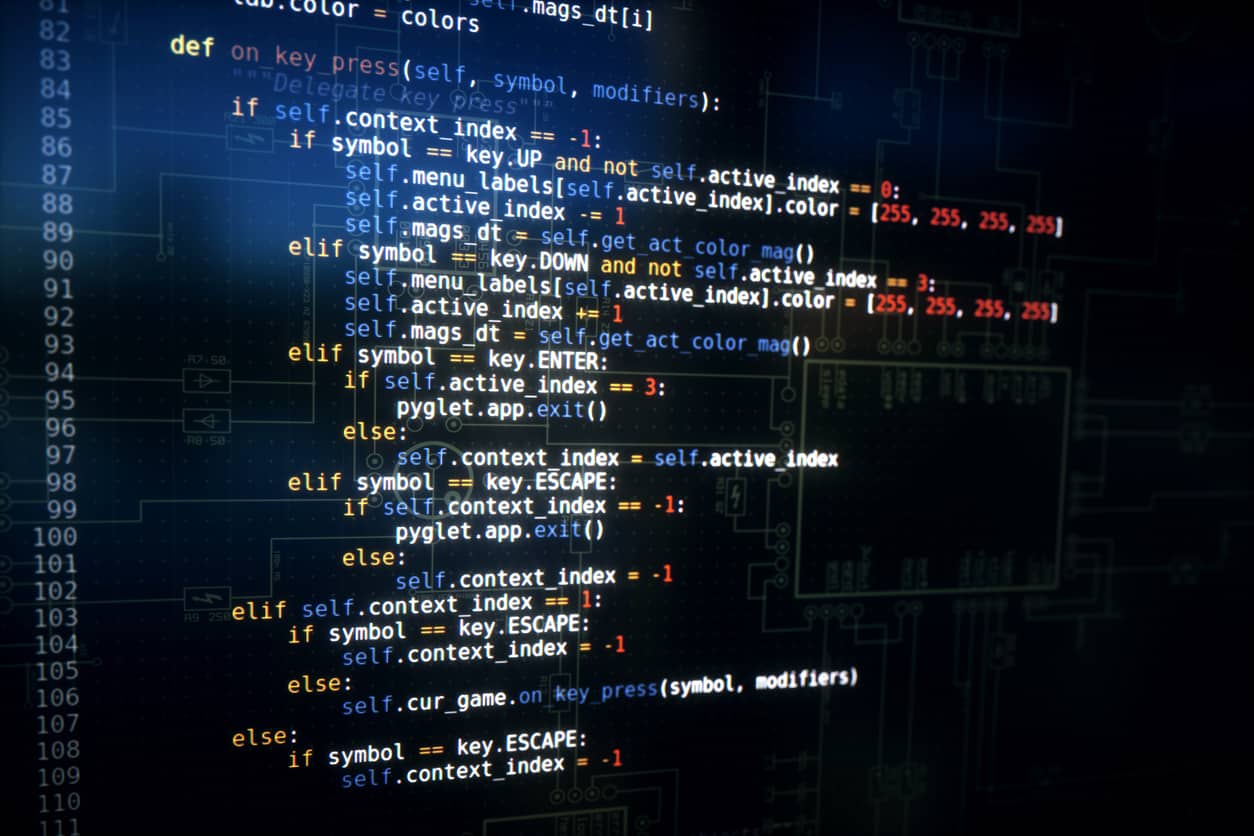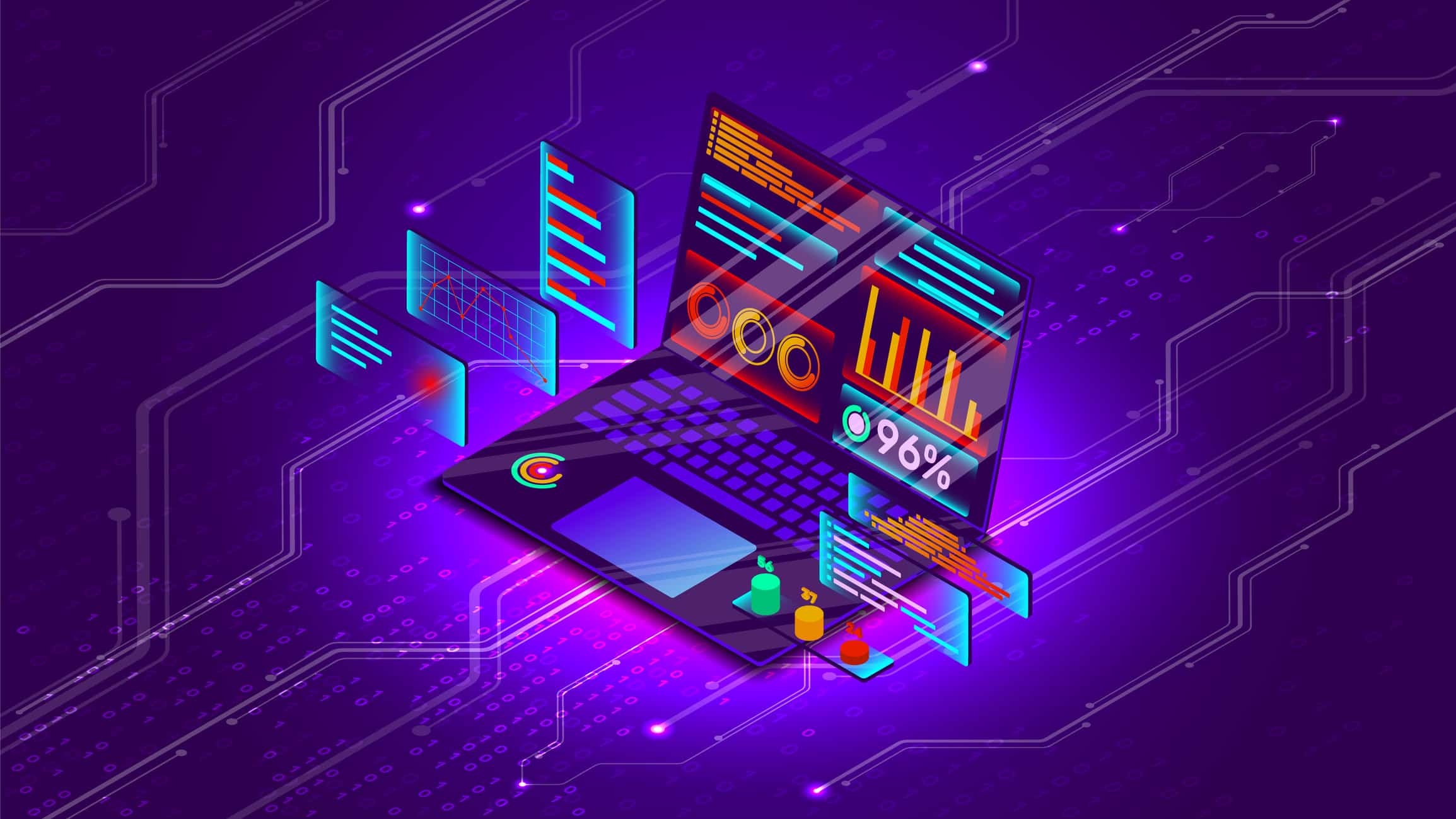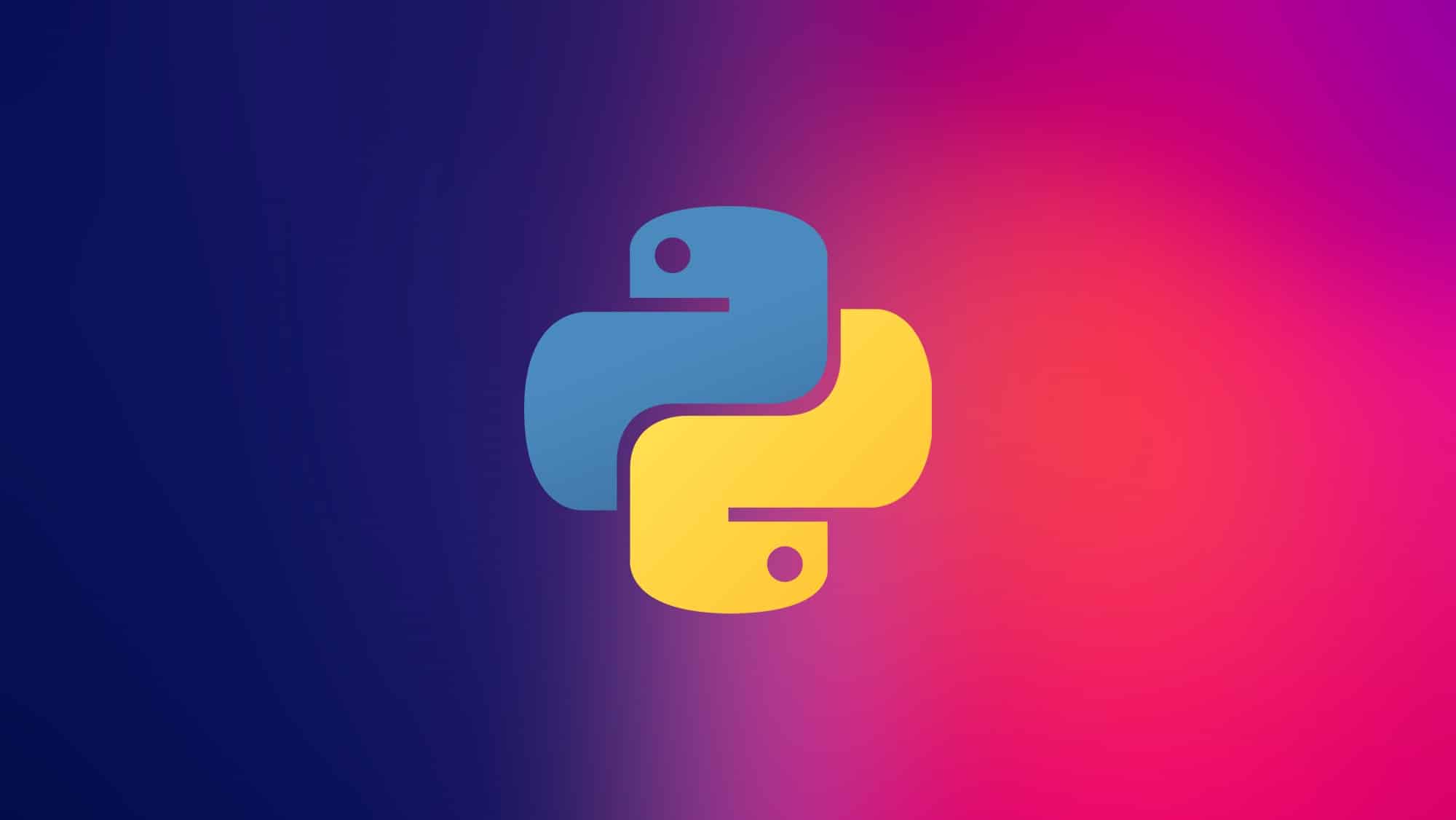C++ and Python are both general-purpose languages, and you will find some similarities and some key differences. The differences will make it straightforward for you to decide which language you wish to learn and implement further. In this blog, we will throw some light on Python vs. C++ and throw some light on the difference between them.
Introduction
Overview of C++
The C++ programming language provides a model of memory and computation that is very similar to that of most computers. In addition, it has powerful and flexible mechanisms for abstraction; that is, language constructs, by which the programmer is enabled to introduce and use new types of objects that match the concepts of an application.
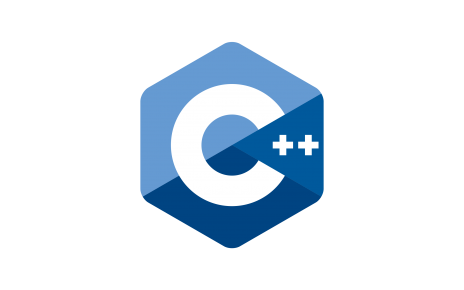
As a result, both high-level programming that depends on direct manipulation of hardware resources to deliver a high degree of efficiency and higher-level styles of programming that rely on user-defined types to provide a model of data and computation that is much closer to a human’s view of the task being performed by a computer.
These higher-level programming styles are often called data abstraction, object-oriented programming, and generic programming.
Overview of Python
At present, there are a lot of programming languages that can understand human needs, but the most important question is how beginner students can be taught programming easily and effectively.
Python, a programming language, has emerged as an answer to this question. Python is suggested as a primary programming language for teaching purposes for beginners because it has neatly organized syntax and powerful tools to solve any task. Moreover, it involves simple math thinking.
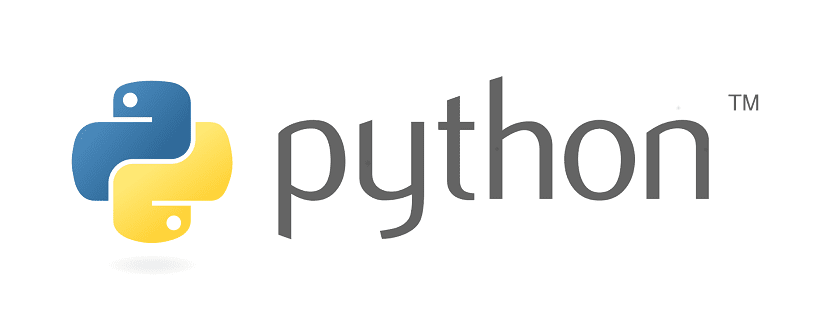
In the present educational atmosphere, Python is accepted as a primary programming language for beginners in most leading universities around the world. The important characteristic of Python is that it is a suitable language for both learning and real-world programming. Python is a powerful high level and object-oriented programming language, and python is being credited as the fastest-growing programming language in recent times. Finally, Python has a bright future ahead. It can develop almost every kind of application, whether a web application or game application. Yes, you heard that right! Now, you can learn app development using python.
The Design and Evolution
C++
Bjarne Stroustrup, a Danish computer scientist, is the main person who has designed and implemented the C++ programming language. Along with a visiting professor at Columbia University, he works as a Managing Director at Morgan Stanley, New York.
This important event took place at AT&T Bell Laboratories to combine the organizational and design strengths of Simula with C’s facilities for systems programming.
The initial version of C++ was named ‘‘C with Classes’’ and was renamed C++ in 1983. In programming, ++ is shorthand for adding one to variety, therefore, C++ generally translates to “one higher than C.” C++ was first used in 1980. It supports traditional system programming techniques and data abstraction. In 1983, it was added with the basic facilities for object-oriented programming and object-oriented design. The programming techniques were gradually introduced into the C++ community.
In 1985, the C++ language was first made commercially available. Within the 1987-1989 time frame, facilities for generic programming were added to the language.
Because of the widespread use of C++ and the appearance of several independently developed C++ implementations, formal standardization of C++ was started in 1990 under the guidance of the American National Standards Institute, ANSI, and later ISO (International Standards Organization), leading to an international standard in 1998.
During the standardization process, the standards committee functioned as an important focus for the C++ community, and its draft standards functioned as interim definitions of the language.
Python
Python is an interpreted, high-level, object-oriented, general-purpose programming language. Python is created by Guido van Rossum, a Dutch programmer, and first released in 1991. Influenced by Monty Python’s Flying Circus, this language was named Python. The design philosophy of Python emphasizes code readability with its extensive use of significant whitespace.
Python is dynamically typed and garbage-collected. Here, dynamically typed means declaration of the variables is not required at the time of assigning value, it states the kind of variable in the runtime of the program. Whereas, in the case of other languages like C, C++, Java, etc, declaration of variables is strictly required before assigning value to them. Garbage collection can be explained as the process by which Python periodically frees and reclaims blocks of memory that are no longer in use.
It supports multiple programming models, including structured (particularly, procedural), object-oriented, and functional programming.
Python is often referred to as a “batteries included” language due to its comprehensive standard library, like Matplotlib, Scipy, Numpy, etc. The Python Standard Library is a collection of the exact syntax, token, and semantics of Python. With the presence of built-in modules that are contained in the Python library, the basic system functionality like I/O and some other core modules are accessible. Maximum Python Libraries are written in the C programming language.
Python was conceived as a successor to the ABC language, in the late 1980s.
Features like list comprehensions and a garbage collection system with reference counting were introduced by the Python 2.0 version which was released in 2000.
Aim
C++
The aim to design C++ was to deliver the flexibility and efficiency of C for systems programming together with Simula’s facilities for program organization, generally referred to as object-oriented programming.
Utmost care was taken to ensure that the higher-level programming techniques from Simula could be applied to the systems programming domain.
C++ provides specially designed abstraction mechanisms that apply to programming tasks requiring the highest degree of efficiency and flexibility. Support for generic programming emerged late as a specific priority.
Python
The first sound bite for the Python creator was, “Bridge the gap between the shell and C.”
The main aim of its language constructs and object-oriented approach is to help programmers to write clear, logical code for small and large-scale projects.
Similarities Between C++ & Python
The following examples show how the two languages are similar:
- They’re both procedural or imperative languages with Object-Oriented programming added in for good measure.
- The ASCII character set is used by both languages.
Ease of Learning
For beginners learning a programming language, the ease of learning is considered one of the major factors. If the programming language is difficult to learn, then the programmer will not find it convenient to go further to learn that language. Python, in this case, is very easy to learn because the syntax of Python is similar to English.
At the same time, C++ is a hard language compared to Python because it is based on object-oriented concepts that deal with memory allocation. And if a program is written wrongly in C++, that affects the system badly and can practically destroy it.
Speed
Python Programming language is much slower than the C++ programming language and the reasons are as follows:
Python is written in the C programming language, so it is very difficult to manage memory in python whereas in C++, memory can be allocated to the variables and when the variable is no longer used in the code, memory can be deallocated from the variable.
Python is slower than C++ because unlike native languages like C/C++, Python code gets interpreted at runtime instead of being compiled to native code at compile time.
Python is an interpreted language, which means that the Python code goes through multiple stages of abstraction before it becomes executable machine code which means first it is compiled into ByteCode. Then Byte Code is interpreted and executed by the PVM (Python Virtual Machine). In C++, the source code is compiled into Binary Code, which the CPU can directly execute, making them more efficient.
Memory Management
For the efficient memory management in C++, the allocation of the memory to the new variables and deallocation of the memory from the variable when it is no longer required, need to be done efficiently by an operator, otherwise, this will result in memory leak because C++ does not provide inbuilt garbage collection and dynamic memory management.
To avoid memory leaks, an operator is required to use delete functions appropriately. Otherwise, what will happen, memory leaks in a program will ironically increase the usage of the memory in the system and since the system has limited memory and it is costly, this will create problems. Whereas Python has the facility of the inbuilt garbage collection and dynamic memory management mechanism, therefore, it allocates and deallocates the memory on its own.
Compilation
The compilation is the biggest difference when comparing Python vs C++. In a programming language, the compilation is a process in which the compiler converts source code into machine language and generates an executable file. The executable file is a separate file and the function of the executable file is to run as a stand-alone program.
C++
In the process of compiling a C++ program for windows, the output generated is actual machine instructions for the specific processor and operating system it’s built for. Mean to say that the program needs to be recompiled separately for Windows, Mac, and Linux. C++ code needs to be modified to run on these three different operating systems.
Python
Whereas, Python uses a different process for compilation. Look at CPython which is the standard implementation for the language. Unless something special is not done, this is the Python you’re running.
Python runs each time the program is executed. It compiles source code in the same pattern as it is done by the C++ compiler. The difference is that Python compiles to bytecode, not to native machine code, and it is the native instruction code for the Python virtual machine. It is used to speed up the subsequent runs of the program and Python stores the bytecode in .pyc files.
Python compiles a py file into a pyc file and executes it. In each subsequent execution the compilation step is skipped till the time there is no change in the program.
CPython is written in C, it can run on most systems that have a C compiler.
Python’s huge standard library is written to work on all operating systems, which is another feature of this cross-platform support.
Readability
C++
Syntax, a set of pre-defined protocols or rules that we need to follow in a programming language that is used in C++ is complex. C++ syntax is difficult to read and write because of its multi-paradigm nature and more advanced syntax.
C++ is especially difficult for beginners to learn and for programmers who have no experience with low-level languages. Programming in C++ involves the usage of the curly brackets and semicolons at the end of the statement, for which skills and knowledge are required.
Python
In contrast to C++, Python does not follow these programming rules. Python is considered as easy to write because it has a clear syntax. Writing programs in Python is much easier when compared to C++. Python is a beginner-friendly language, as it is a programming language that prioritizes readability, making it easier to understand and use. The usage of the indentation rules, which are similar to English allows the programmer to understand the code more easily and this enables them to leap into the world of development.
Variable Declaration
C++
C++ Programming language is statically typed, which means the declaration of a variable, the data type of variables, etc are required.
In C++, before using the variable, it is required to be declared by mentioning the type and name of the variable. This makes C++ a statically typed programming language because the variable types are known at compile time.
The importance of variable declaration is to assure the compiler that there is one variable existing with the given type and name so that the compiler proceeds with further compilation without needing complete detail about the variable. The variable declaration is useful at the time of compilation only, the actual variable declaration is needed by the compiler at the time of linking of the program.
A variable declaration is useful when multiple files are used and the variable is defined in one of the files which will be available at the time of linking of the program. With the use of an extern keyword, a variable can be declared at any place. Though a variable can be declared multiple times in a C++ program, it can be defined only once in a file, a function, or a block of code.
Python
Since Python is a dynamically typed programming language, there is no need to declare variables before using it.
Remember that Python variables are simply labels, and are not bound to a specific type. A variable in Python doesn’t have a type, it is just a nickname. It is the object that it is pointing to that has a type.
In a dynamically typed language, the variable is associated with run-time values only, not named variables/fields/etc. This means that a programmer can write a little quicker because he does not have to specify variable types every time.
Functions
C++
The function in C++ accepts and returns a predefined type of value according to the definition. For example, if a function is used to add two integer values this function will use only integer values as input and the output will be the integer value.
Python
In python, there is no limitation on the type of the argument and the type of its return value.
In Python, a function can be defined as a group of related statements that performs a specific task.
A program is broken into smaller and modular chunks with the help of functions. As the program becomes larger and larger, the work of functions is to make it more organized and manageable. And also, it avoids repetition and makes the code reusable.
Popularity
C++ vs Python
Though both languages are very popular in the software development industry around the world. And in terms of business, Python has significantly more market share than C++. This market share ratio is around a million vs. 6 million.
On Github, a code hosting platform for version control and collaboration, a developer can find more than enough information to support either Python or C++ development. On StackOverflow which is known as a question and answer site for professional and enthusiast programmers. It’s built and run by professionals as part of the Stack Exchange network of Q&A sites. This is a very useful and detailed library built with the help of professionals working together to facilitate programmers to have high-quality answers to every question about programming. If a developer asks a question about either language, he gets well-qualified answers very quickly. It is believed that even though Python is more popular than C++, this is essentially a draw.
In the future, the case might be different. It looks like C++ is fading and Python is growing. C++ is fading just not because of Python, there are some strong alternatives to it are available in the market, like Java, JavaScript, and C#.
At the rate web, applications are growing much faster than desktop applications, and the market share of Java, JavaScript, and even C# is on the rise in the market. Because Python is much easier to use for web applications than C++, therefore, Python is also seeing its share of web-based growth.
Performance
C++
C++ is a statically typed language, therefore, there are fewer errors to take care of at runtime. It can also create a more robust and faster runtime code, making it a high-performance language.
Python
Being dynamic, in Python, there is a possibility of some errors or unwanted situations arising at runtime. If we talk about the performance, Python lags behind C++.
Uses/Applications of C++ & Python
C++
There are some interesting areas where C++ is popularly used.
Operating Systems
Microsoft Windows or Mac OSX or Linux, all these are programmed in C++. C++ is known as the backbone of all well-known operating systems. The reason behind it is that it is a strongly typed and fast programming language which makes it an ideal choice for developing an operating system. In addition, C is quite close to the assembly language which further helps in writing low-level operating system modules.
Browsers
The search engines of various web browsers are programmed in C++ to provide them with more speed. The faster execution of the rendering engines ensures that users don’t have to wait for the content to come up on the screen. Therefore, in such low-latency systems, C++ is used as the programming language.
Libraries
C++ is used in many high-level libraries as the core programming language. Because of the speed it provides, it is used in the backend of many Machine Learning libraries, like Tensorflow, one of the most widely used Machine Learning libraries. High-performance computations are required in these libraries because they involve multiplications of huge matrices to train Machine Learning models. Therefore, C++ comes as an aid in such libraries where the performance becomes a critical element.
Graphics
For all graphics applications wherein fast rendering is considered an important element, C++ helps in reducing the latency. Software that includes computer vision, digital image processing, and high-end graphical processing use C++ as the backend programming language. Even hi-graphics popular games use C++ as the primary programming language. In such situations, the speed that C++ offers helps the developers in expanding the target audience because an optimized application can run even on low-end devices that do not have high computation power.
Banking Applications
Many popular core banking systems, for example, Infosys Finacle, uses C++ as one of the backend programming languages. Millions of transactions are processed by banking applications daily and for that high concurrency and low latency, support is required. To meet this requirement, C++ automatically becomes the preferred choice owing to its speed and multithreading support.
Cloud/Distributed Systems
C++, because of its good connectivity with the hardware and compatibility with a lot of machines, has become the first choice for use in large organizations that develop cloud storage systems and other distributed systems. Scalable file systems are used in cloud storage systems because they work close to the hardware.
Since C++ is close to hardware and also has multithreading libraries, it becomes the first choice. The function of multithreading libraries in C++ is to provide high concurrency and load tolerance which is very much needed in such scenarios.
Databases
Postgres and MySQL being two of the most widely used databases are written in C++ and C, the precursor to C++. All well-known applications, like Quora, YouTube, etc, we all use in our day-to-day life, use these databases.
Embedded Systems
It is the fact that C++ is closer to the hardware level than other high-level programming languages and this is the reason why it is used in various embedded systems like medical machines, smartwatches, etc., as a primary programming language.
Telephone Switches
Being one of the fastest programming languages, C++ is widely used in programming telephone switches, routers, and space probes.
Compilers
The compilers of various programming languages use C and C++ as the backend programming language because both C and C++ are relatively lower-level languages and are closer to the hardware and therefore become an ideal choice for such compilation systems.
Python
Data Analysis and Machine Learning
Python has become a famous name in data science that allows data analysts and other professionals to use the language to conduct complex statistical calculations, build machine learning algorithms, create data visualizations, data manipulate and data analyze data, and complete other data-related tasks. Building a wide range of different data visualizations, like line and bar graphs, pie charts, histograms, and 3D plots, is now possible with Python.
It also has several libraries like TensorFlow and Keras, that enable coders to write programs for data analysis and machine learning more quickly and efficiently.
Web Development
Python is used frequently to develop the back end of a website or application (the parts that a user doesn’t see). Python plays an important role in web development that includes sending data to and from servers, processing data and communicating with databases, URL routing, and ensuring security. Python offers several frameworks for web development, like Django and Flask.
Back-end engineers, full-stack engineers, Python developers, software engineers, and DevOps engineers, use Python for some web development jobs.
Automation or Scripting
The best solution to get rid of performing a task, again and again, is to just make it automated. Python helps you in this regard so that you can perform your task more efficiently. The building of these automated processes is achieved by writing code which is called scripting.
In the world of coding, using automation is very helpful in many areas, like checking for errors across multiple files, converting files, executing simple math, and removing duplicates in data.
Using Python, beginners can automate their simple tasks on the computer, like renaming files, finding and downloading online content, or sending emails or texts at desired intervals.
Software Testing and Prototyping
In software development, Python provides help in tasks, like bug tracking, build control, and testing.
With the help of Python, software developers can automate testing for new products or features.
Green and Requestium are included in some Python tools that are used for software testing.
Everyday tasks
Python is not only meant for programmers and data scientists, less data-heavy professions, like journalists, small business owners, or social media marketers can also be benefitted at a large scale by just learning it.
Non-programmers can also simplify certain tasks of their lives with the use of Python. Just have a look below at a few of the tasks that can be automated with the help of Python:
- Keeping track of stock market activities or crypto prices
- Setting a text reminder to carry an umbrella whenever it’s raining
- Updation of a grocery shopping list
- Renaming large batches of files
- Converting text files to spreadsheets
- Randomly assigning tasks to family members
- Filling of online forms automatically
Learning C++ Vs Python
C++
C++ is a hard language to learn for both people who are new to the programming environment and those who have programmed before but don’t have any programming experience in the low-level language before, like C or assembly. But, the word “hard” does not apply to one who is determined. There is always hope.
For a newcomer in the programming world, at least 3 months are required to learn the basics of C++ which includes at least 2 to 3 hours of learning each day. However, for a person who has done programming before, at least one hour a day of learning is required.
If you want to become a master of C++, then, it will take at least 2 years.
Python
The amount of time required to learn depends on the goals. Generally, for a beginner, 2 to 6 months are required to learn the fundamentals of Python. But writing a short program in Python can be learned in a matter of minutes, it depends on how determined you are. Developing mastery in Python usually takes months or years.
There are several factors involved in how much time it takes to learn Python, this also includes how much Python is needed to know to achieve the desired goal. The goal may be anything, like one wants to learn Python to perform a specific task then he can learn it in minutes or one wants to get a job as a data analyst then he has to spend the requisite time. Likewise, the learning period varies according to the desired goal.
Some factors are here that determine how quickly one can learn Python:
Previous programming experience: If you’ve previous code writing experience, you can learn Python more quickly.
Learning method: Well-structured courses in line with your goals are always useful to accelerate your learning.
Time devoted to learning: Time is a precious factor, the more time you devote to learning and practicing Python, the faster you will learn Python. Generally, a good idea is that you should commit a little time every day.
Learning C++ & Python
- To learn the basics of both languages at least 2 to 6 months of training is required.
- To own a master’s degree in one of these two degrees at least 2 years of training is required.
The selection of training institutions is dependent on your capacity and how much money you can afford. There are many training institutions available that can be searched online and the course fees vary according to their reputation. We suggest you go for free online programs in C++ or Python tp solidify your skills in these languages.
Conclusion
C++ and Python are two different languages because they have very diverse features and applications. Despite having easy syntax, high reliability, etc, Python is far behind C++ when it comes to the matter of system programming, performance, and speed.
While Python can be considered the best choice for machine learning development, C++ is considered best for a whole range of applications including system programming because it offers all the features that can be made available.
In this blog, we have come across many aspects of both languages. Both languages have importance in terms of their performance and abilities. We can assure you that reading this blog carefully will lead you to acquire immense knowledge about these languages. You can upskill and reskill yourself with Great Learning Academy.
Recommended Articles
- R vs Python for Data Science
- Top 120+ Python Interview Questions and Answers in 2022
- Python developer – Skills, Courses, Job Roles, and Advantages
- 14 Python Project Ideas for Beginners
- C++ Tutorial for Beginners
- C++ Projects To Work On In 2022
